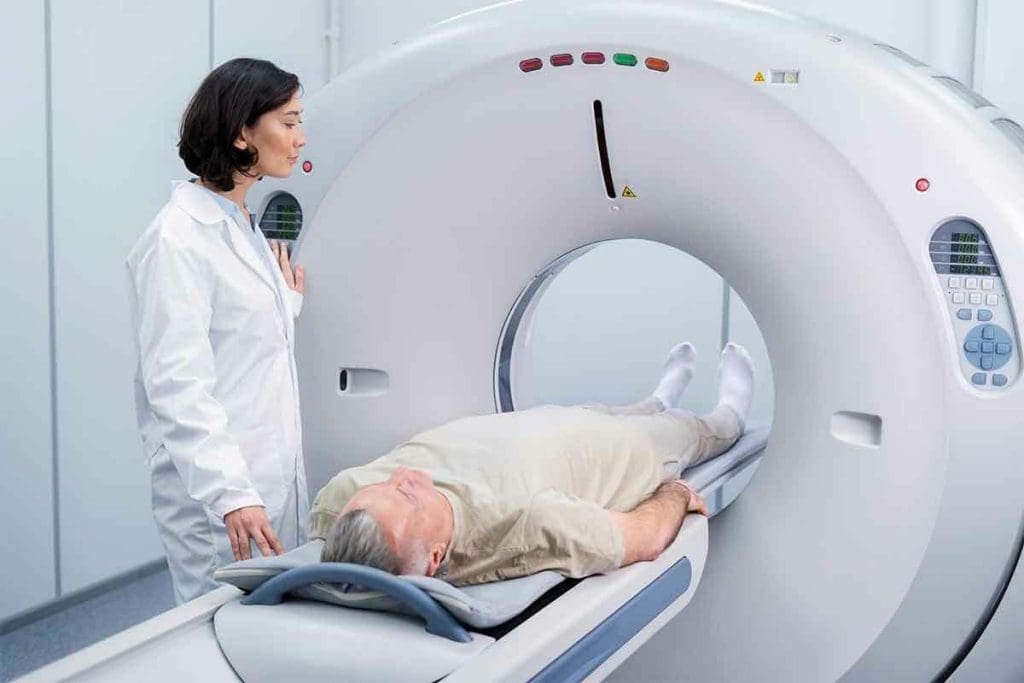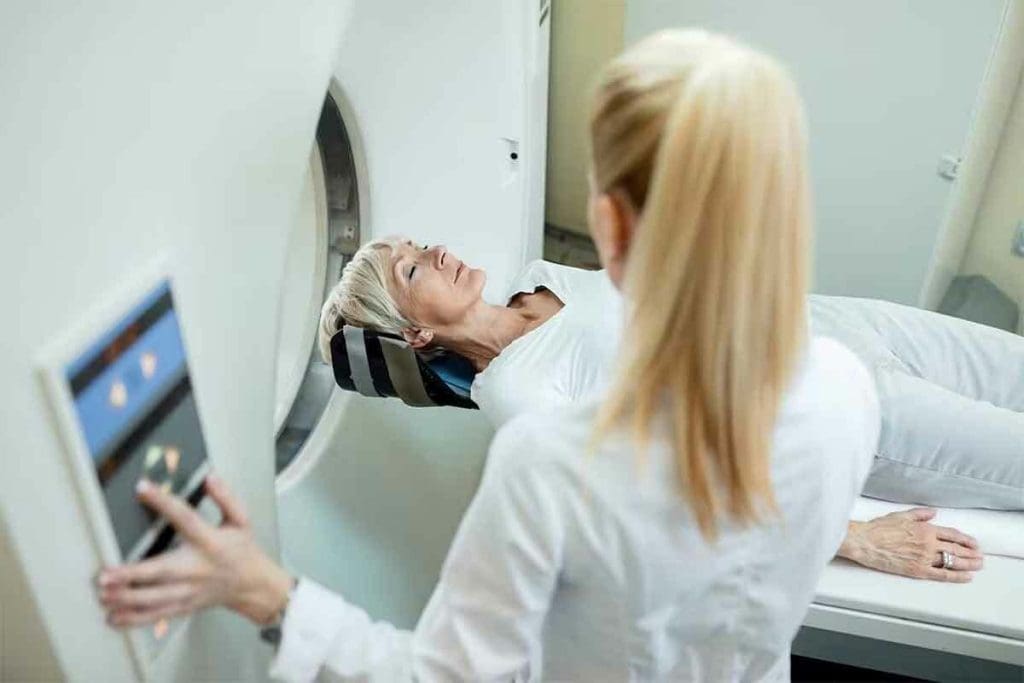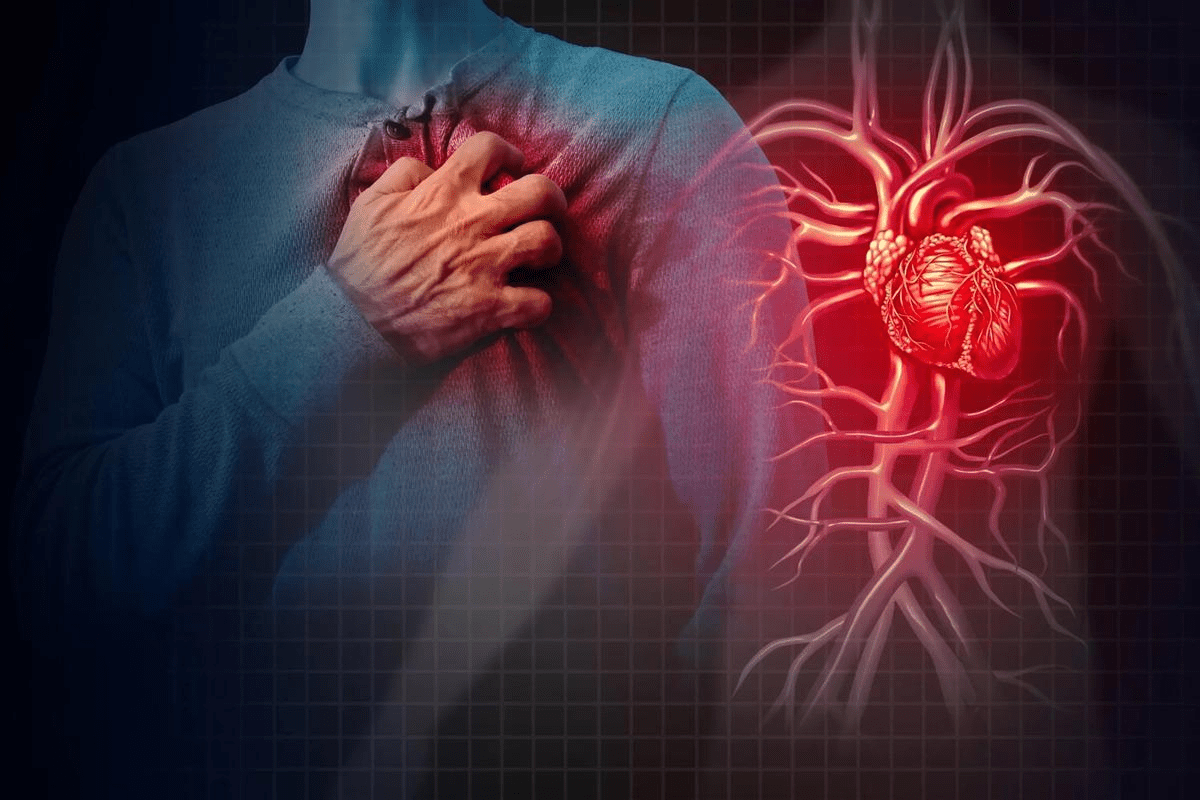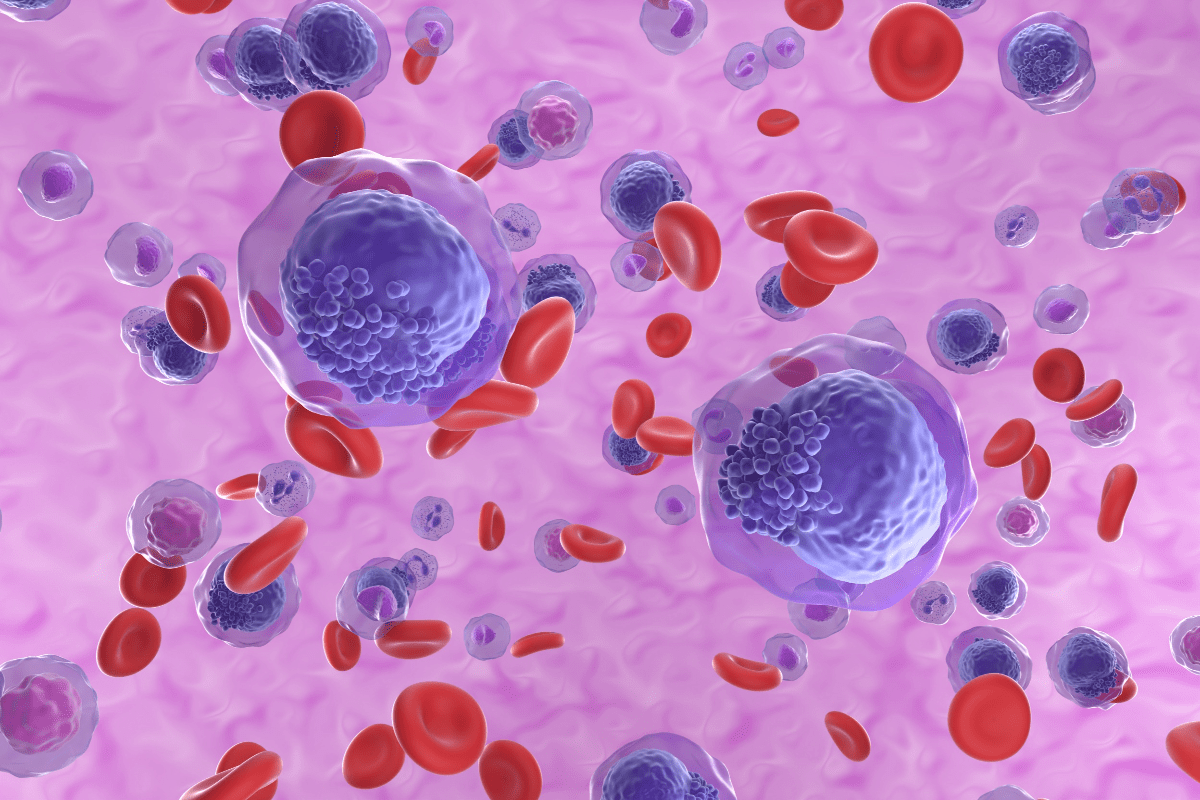Last Updated on November 27, 2025 by Bilal Hasdemir

At Liv Hospital, we know that getting a PET scan can be scary. You might wonder what it’s like. A PET scan, or positron emission tomography scan, is a key tool for doctors. It helps them find and manage health issues like cancer, brain problems, and heart disease. So, how long does a PET scan last? The entire process usually takes about 2 to 3 hours. This includes a waiting period of 30 to 60 minutes after the tracer injection, during which the tracer travels through the body, followed by the actual scanning which lasts around 20 to 45 minutes. Patients are asked to remain still during the scan for clear images.
The PET scan duration is usually 30 to 45 minutes. But you’ll need to spend about 2-3 hours at the imaging center. This includes getting ready and waiting for the dye to work.
We’re here to help you feel comfortable and informed during your PET scan. We want to make sure you know what to expect every step of the way.
Key Takeaways
- PET scan is used to diagnose and monitor various health conditions.
- The scan duration is typically between 30 to 45 minutes.
- Total time at the imaging center is around 2-3 hours.
- Preparation and absorption of the radiotracer are included in the total time.
- Liv Hospital provides complete guidance and support throughout the PET scan experience.
Understanding PET Scans: Basic Principles and Applications

The PET scan is a cutting-edge tool that uses a radioactive tracer to see how the body works. It’s great for finding and tracking different health issues, even before other tests can. This is because it shows how cells are working, not just where they are.
What Is a Positron Emission Tomography Scan?
A PET scan is a special imaging test that shows how the body’s tissues and organs function. It uses a radioactive drug, or tracer, to do this. This tracer is often glucose because cancer cells use more glucose than normal cells.
The PET scanner picks up the radiation from the tracer. It then makes detailed pictures of where the body is most active. This is key for spotting and tracking diseases like cancer, brain disorders, and heart problems.
How PET Scans Detect Cellular Metabolism Changes
PET scans find out how active cells are in the body. When the tracer is injected, it goes to very active areas. The PET scanner then spots the radiation from the tracer, showing where the cells are working too hard.
This skill in spotting metabolic changes is why PET scans are so good at finding diseases early. They can spot problems before other tests, like CT or MRI scans, can.
How PET Scans Differ from Other Imaging Tests
PET scans are different from CT or MRI scans because they show how the body is working, not just where it is. This is because they look at how cells are using energy, which is key for diagnosing and tracking health issues.
By mixing metabolic info with where things are in the body, doctors get a clearer picture of what’s going on. This leads to better diagnoses and treatment plans.
Medical Conditions Diagnosed with PET Scans

PET scans are advanced tools in modern medicine. They help find and manage serious health issues. We use them to spot cancer, heart disease, and brain disorders.
PET Scans for Cancer Detection and Monitoring
PET scans are key in fighting cancer. They show cancer cells as bright spots because they use more energy. PET scans help find cancer, see if it has spread, check if treatments work, and spot cancer coming back. This info is vital for choosing the right treatment and checking if it’s working.
Neurological Applications of PET Scanning
PET scans also help with brain and nervous system problems. They show how the brain works and find odd activity. This is great for diagnosing Alzheimer’s and epilepsy. PET scans give doctors clear images of brain activity, helping them make better diagnoses and treatment plans.
Cardiac PET Scan Uses
Cardiac PET scans check the heart’s function and blood flow. This is key for diagnosing and treating heart disease. They show where the heart might not get enough blood, helping plan surgeries like angioplasty or bypass.
How Long Does a PET Scan Last? Breaking Down the Timeline
Knowing how long a PET scan takes is key for patients. The scan itself is short, but getting ready and other steps add to the time.
Actual Scanning Time
The PET scan itself lasts 30 to 45 minutes. You’ll lie on a table that moves into the scanner. Our team will make sure you’re comfy and tell you to stay very quiet.
Total Appointment Duration
The scan itself is quick, but you’ll be at the center for 2 to 3 hours. This extra time is for getting ready and for the tracer to spread through your body before scanning.
Factors That May Extend Your PET Scan Time
Several things can make your PET scan longer. These include:
- The type of PET scan you’re having
- Your health condition
- The imaging center’s rules
- Any extra tests or scans needed
Here’s a quick look at what might affect your scan’s length:
| Activity | Typical Duration |
| Preparation and tracer administration | 60 minutes |
| Uptake period | 60 minutes |
| Actual PET scan | 30-45 minutes |
| Total appointment time | 2-3 hours |
Knowing these details helps you prepare better for your PET scan. It makes your visit to the imaging center smoother.
Before Your Appointment: Preparation Requirements
To have a smooth PET scan experience, knowing what to do beforehand is key. Proper preparation helps get accurate results and keeps you safe.
Dietary Restriction Before a PET Scan
For most PET scans, you should not eat for 4 to 6 hours before. You can drink plain water during this time. This fasting ensures the tracer works best, giving clearer images.
Key Dietary Considerations:
- Fast for 4 to 6 hours before the scan
- Drink unflavored water during the fasting period
- Avoid strenuous exercise for up to 24 hours before the scan
Medication Considerations
Tell your healthcare team about all medications you’re taking. Some might need to be changed or stopped before the scan. Your doctor will guide you based on your medications.
What to Wear and Bring to Your Appointment
Wear comfy clothes without metal on the scan day. Avoid jewelry, clothes with zippers, bras, or hair clips. You’ll need to remove these to avoid scan interference.
Recommended Items to Bring:
- Comfortable clothing without metal
- Any relevant medical records or previous scan results
- A list of your current medications
Discussing Medical History and Concerns
Talk about your medical history and any worries with your healthcare provider before the scan. This includes allergies, past reactions to contrast agents, or other conditions that might impact the scan.
| Preparation Requirement | Description |
| Dietary Restrictions | Fast for 4-6 hours; drink unflavored water |
| Medication | Inform your doctor; adjust medications as necessary |
| Clothing and Accessories | Avoid metal; wear comfortable clothing |
| Medical History | Discuss allergies, previous reactions, and medical conditions |
Arrival at the Imaging Center: Initial Procedures
When you arrive at the imaging center for your PET scan, you’ll start a series of steps. These steps are designed to make your scan smooth and effective. It’s best to arrive about an hour early to get everything done.
Check-in Process and Paperwork
First, you’ll check in at the reception desk. There, you’ll fill out any remaining paperwork. This includes your personal details, medical history, and scan instructions. Our staff will help you with this, making sure we have all the information we need.
Initial Assessment by Medical Staff
Next, our medical staff will do an initial assessment. This is important to make sure you’re ready for the PET scan. They’ll look over your medical history, talk about any concerns, and check if you’ve followed the preparation instructions.
Blood Glucose Level Testing
For some PET scans, like those for cancer or diabetes, we test your blood glucose levels. This test is key to making sure your glucose is right for the scan. Our staff will do this test quickly and make any needed changes based on the results.
After these steps, you’ll get an injection of the radioactive tracer about an hour before the scan. This tracer is given through a small tube called a cannula. It’s a key step in getting your body ready for the PET scan. While you wait, you can relax and get ready for the scan.
Knowing what to expect when you arrive at the imaging center can make you feel more at ease. Our team is here to make your experience as smooth and stress-free as possible. We’re committed to giving you the best care during your visit.
The Radiotracer: What It Is and How It Works
The radiotracer in PET scans is key to showing where cells are active. It’s a radioactive substance that goes to areas with lots of activity. This lets doctors see how different parts of the body work.
Types of Radiotracers Used in PET Scanning
There are many types of radiotracers for PET scans. Each one targets different biological processes. Doctors pick the right one based on what they need to know.
The 18F-FDG Tracer: Most Common PET Scan Dye
18F-FDG (fluorodeoxyglucose) is the most used radiotracer. It’s like glucose that cells eat. Cancer cells eat more of it, so they show up on scans.
This makes 18F-FDG great for finding cancer. It’s used in oncology.
How Radiotracers Highlight Abnormal Cellular Activity
Radiotracers build up in areas with lots of cell activity. For example, cancer cells take up more 18F-FDG. This lets doctors see tumors.
This skill is why PET scans are so useful. They help find and track many health issues.
Safety Profile of PET Scan Radiotracers
PET scan radiotracers are safe. They give off low amounts of radiation. They also leave the body quickly.
But it’s important to listen to your doctor. They’ll tell you how to stay safe during the scan.
The Injection Process and Uptake Period
Getting a PET scan starts with an injection of a radioactive tracer. This step is key for the scan to work. It lets the PET scanner see how your body is working.
What to Expect During Radiotracer Administration
The tracer is given through a vein in your arm or hand. You might feel a bit cold for a short time. But this feeling goes away quickly and is not harmful. Our team will make sure the injection is easy and painless.
Possible Side Effects from the Injection
Most people don’t have any problems with the tracer. But some might feel a bit of discomfort where the injection was given. This usually goes away quickly. If you’re worried or notice anything strange, tell our medical team right away.
The 60-Minute Waiting Period: Why It’s Necessary
After the injection, you’ll wait for about 60 minutes. This lets the tracer spread through your body. It needs time to build up in the areas we want to see, so the PET scanner can take clear pictures.
Activities During the Uptake Phase
While waiting, try to relax and stay quiet in a reclining chair. Don’t do anything too hard, as it can mess with the tracer’s spread. You can read, listen to music, or just relax. Our staff will help you make the most of this time.
| Activity | Recommendation |
| Reading | Allowed, can help you relax |
| Strenuous Activities | Not recommended, can affect tracer distribution |
| Listening to Music | Allowed, can aid in relaxation |
Knowing about the injection and waiting time helps you get ready for the PET scan. If you have any questions or worries, just ask our medical staff.
The Scanning Procedure: Step by Step
Before your PET scan, it’s good to know what happens. The PET scan process is simple. Knowing what to expect can make it more comfortable for you.
Positioning on the Scanner Table
You’ll lie on a flat bed that slides into the PET scanner. It’s a big, doughnut-shaped machine. You might need to put your arms up or by your sides. Our team will make sure you’re comfortable and in the right spot for the best images.
What Happens Inside the PET Scanner
Once you’re in place, the scanner will take pictures of the area being checked. The PET scan usually takes about 30 minutes. You can talk to the technologist running the scanner during this time.
Staying StiStillmportance and Techniques
It’s important to stay very quiet during the scan. This helps make sure the pictures are clear. Our team will show you how to stay calm and quiet. You might need to hold your breath or stay very quiet for a bit.
Communication with Technologists During the Scan
The person running the scanner can hear and talk to you from another room. If you’re uncomfortable or need help, just let them know. Talking to them helps keep you comfortable and ensures the scan goes well.
| Aspect of the Scan | Description | Importance |
| Positioning | Lying on a flat bed that slides into the PET scanner | Ensures correct imaging and comfort |
| Scanning Time | Typically around 30 minutes | Allows for detailed image capture |
| Communication | Two-way communication with the technologist | Ensures patient comfort and scan success |
Different Types of PET Scans and Their Durations
PET scans can last different amounts of time, depending on what part of the body is being scanned. They are used for whole-body scans, brain scans, and cardiac scans. Each type has its own needs and time frame.
Whole-Body PET Scan Time Frame
Whole-body PET scans are often used for cancer staging. They take longer than scans for specific areas. The scan itself lasts 30 to 45 minutes. But getting ready and waiting for the scan can add 2 to 3 hours to your visit.
Brain PET Scan Duration
Brain PET scans help diagnose and track neurological issues. They are quicker, lasting 20 to 30 minutes. But you’ll need to plan for 2 to 3 hours, including preparation and waiting.
Cardiac PET Scan Length
Cardiac PET scans check the heart’s function and find coronary artery disease. They usually take 30 minutes to an hour. Like other scans, you should plan for 2 to 3 hours.
PET/CT Combination Scans: Additional Time Considerations
PET/CT scans combine PET and CT imaging. The PET scan itself doesn’t add much time. But the CT part can add 10 to 15 minutes. So, expect to spend 2 to 3 hours for a PET/CT scan.
In summary, PET scan times vary by type, but most appointments last 2 to 3 hours. Knowing the different types and their times helps prepare for your visit.
Is a PET Scan Safe? Understanding Radiation Exposure
Many patients worry about the safety of PET scans because of the radiation. We get it. PET scans are important for diagnosis, but the radiation concern is real.
Radiation Levels Compared to Other Medical Procedures
PET scans use a small amount of radiation from a radioactive tracer. But the risk of harm is low. The dose is similar to some CT scans.
Despite the risks, the benefits of a PET scan are often greater. It helps in treating serious health issues. The scan’s findings are key to treatment plans.
Risk vs. Benefit Assessment
Assessing PET scan safety means looking at risks and benefits. The tracer decays fast, and its effects are short. Drinking water after the scan helps remove it from your body.
Talk to your doctor about any worries. They can explain the risks and benefits to you.
Special Considerations for Pregnant Women and Children
Pregnant women and kids need extra care with PET scans. The radiation is usually safe, but we take extra steps. For pregnant women, we weigh the benefits against the risks.
For kids, we adjust the tracer dose based on their size and weight. We also look for other ways to diagnose.
How Medical Facilities Minimize Radiation Exposure
Hospitals follow strict rules to reduce radiation in PET scans. We use the least amount of tracer needed and make sure scans are quick. Our facilities have the latest tech to reduce radiation while getting good images.
Knowing about PET scan safety and how we reduce radiation helps patients make better choices. We aim to provide a safe place for all PET scan patients.
After Your PET Scan: Recovery and Results
After your PET scan, knowing what to expect is key. We’ll walk you through the recovery steps and what you might feel afterward.
How You Might Feel Post-Procedure
You might not notice any changes after the scan. But it’s important to follow your healthcare team’s post-procedure advice. Usually, you can go back to your usual activities unless told not to.
Hydration and Activity Recommendations
Drinking lots of water helps get rid of the tracer. You can eat and drink right after the scan, unless told not to. Staying hydrated is important for removing the tracer.
When and How You’ll Receive Your Results
Your PET scan results will be ready in a few days. You’ll have a meeting to talk about them and what’s next with your healthcare provider.
Follow-up Recommendations
Make sure to go to your follow-up appointment. Your healthcare provider will discuss any extra treatments or tests you might need based on your scan results.
We know a PET scan is a big deal. We’re here to support you every step of the way.
Conclusion: What to Remember About Your PET Scan Experience
As we wrap up our guide to PET scans, let’s recall the main points. A PET scan is a key tool for doctors. It helps find and manage health issues like cancer, brain problems, and heart conditions.
Knowing the PET scan process can make you feel more at ease. We’ve covered how to prepare, what happens during the scan, and what comes next. This way, you’re ready for your PET scan journey.
Always follow your healthcare team’s prep instructions. And don’t be shy to ask questions. Your healthcare team wants to make your PET scan experience as easy and worry-free as it can be.
FAQ
How long does a PET scan typically last?
The PET scan itself takes 30 to 45 minutes. But you should plan to spend about 2 to 3 hours at the imaging center.
What is a PET scan used for?
PET scans help find and manage health issues like cancer, neurological problems, and heart disease. They show where cells are not working properly.
What should I prepare for a PET scan?
You need to fast for 4 to 6 hours before the scan. Also, avoid hard exercise for up to 24 hours beforehand. And, remove any metal items.
What is injected into my body during a PET scan?
A tiny amount of a radioactive tracer, like 18F-FDG, is injected into your blood. It lights up areas where cells are very active.
Is a PET scan safe?
PET scans use a bit of radiation, but the benefits are usually worth it. They help diagnose and manage serious health issues.
How will I feel after a PET scan?
You can usually go back to your normal activities after the scan. Drinking water helps get rid of the tracer from your body.
How long does it take to receive PET scan results?
You’ll get your results in a few days. Then, you’ll have a meeting to talk about what they mean and what to do next.
Can I eat or drink before a PET scan?
You must fast for 4 to 6 hours before the scan. But you can drink water.
What happens during the injection of the radiotracer?
The tracer is given through a vein in your arm or hand. You might feel a cold sensation as it’s injected.
How long do I need to wait after the radiotracer injection?
Wait about 60 minutes after the injection. This lets the tracer spread through your body and be absorbed by tissues.
What happens during the PET scanning procedure?
You’ll lie on a narrow table that slides into the scanner. Stay very quiet during the scan to get clear images.
Can I communicate with the technologist during the scan?
Yes, you can talk to the technologist while they operate the scanner.
Are there any side effects from the PET scan radiotracer?
Some people might feel a little discomfort where the tracer was injected. But the tracer is usually safe.
How do medical facilities minimize radiation exposure during PET scans?
Facilities use strict rules to lower radiation exposure. They use the least amount of tracer needed and make sure the scan is done efficiently.
References
- Goetze, S., & Engelien, A. (2021). PET in neurology: Applications and emerging developments. European Journal of Nuclear Medicine and Molecular Imaging, 48(5), 1409-1426. https://pubmed.ncbi.nlm.nih.gov/33008955/






